“The Gold Rush” has been delighting audiences for almost 90 years — it’s one of the flat-out funniest films made in the silent era or any other.
This is the movie Chaplin wanted to be remembered for. Probably the grandest silent-movie entertainment of them all.
Close your eyes and let some of its classic scenes flicker across your mind — the Little Tramp making a meal of a boot while twirling the shoestrings as pasta … his transformation into a big, juicy chicken … the miner’s shack wobbling on the edge of a cliff … and, of course, the magical dance of the dinner rolls.
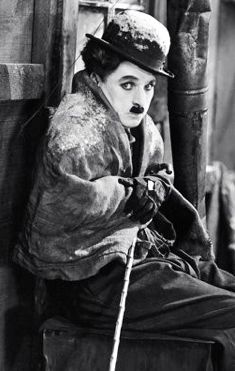 In 1925, “The Gold Rush” became the first global blockbuster. “The world’s greatest laughing picture” was the most eagerly awaited film of its time. The “dramatic comedy” probably made Chaplin the most famous person on the planet, if he wasn’t already.
In 1925, “The Gold Rush” became the first global blockbuster. “The world’s greatest laughing picture” was the most eagerly awaited film of its time. The “dramatic comedy” probably made Chaplin the most famous person on the planet, if he wasn’t already.
In the early 1940s, though, Chaplin wasn’t feeling sentimental. He decided to recut the work, adding his own clippy narration and original score (the director caught the film-scoring bug a decade earlier). He subbed in different takes, cut some scenes and even changed the ending.
Once again, “The Gold Rush” hit pay dirt. “The result is a sight for sore eyes,” Time’s James Agee wrote in his review. “The stronger light of modern projection machines considerably improves it.”
The 1942 film was the version Chaplin preferred and considered definitive, and the one most people remember today.
Few cared about silents in 1942. The great Chaplin’s early works had gathered dust or worse as talkies took over. Even he saw little remaining value in the original silent version of “The Gold Rush.” Elements were lost or discarded.
In modern times, though, things changed. Silents made a comeback in the classic film boom of the 1960s, capturing imaginations once again.
As the DVD era dawned, Image and Fox Home Entertainment felt the wrath of the Chaplin faithful as they released Chaplin’s 1942 sound version of the film, ignoring the classic silent. Fans had a legitimate beef because the original had been reconstructed with great effort a few years before, in 1993.
MK2 and Warner got it right in 2003, mostly. The partners on an (excellent) Chaplin series didn’t dare blow off the original, but their “Gold Rush” DVD set relegated the 96-minute silent to Disc 2, as an extra. The lively new score came from a lone pianist.
Now comes Criterion, doing the right thing, as usual. The debut of “The Gold Rush” on Blu-ray gives the star treatment to both the 1925 and 1942 versions.
The reconstructed silent gets a new 2K digital transfer (done in partnership with the Cineteca di Bologna). Criterion then spent over 500 hours removing scratches and other defects. (The Warner DVD’s silent was most welcome at the time — presented in 1.33:1 full-screen as Chaplin intended — but its images were flat and inconsistent, with some visible wear throughout.)
Chaplin biographer Jeffrey Vance does a new full-length commentary over the silent in which he describes the differences between the two versions.
The silent now cues up with Chaplin’s clever and percussive 1942 score, which was adapted and expanded for the 1925 film by Timothy Brock. This 2011 recording rolls out in 5.1 surround DTS-HD Master Audio.
Rags to riches, just like the sad-sack prospectors from the film.
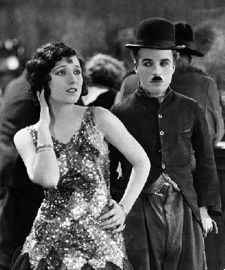 Chaplin was right, of course. The 1942 edition remains more accessible to mainstream audiences, but here’s hoping owners of the new “Gold Rush” Blu-ray won’t bypass the singular experience offered by the original.
Chaplin was right, of course. The 1942 edition remains more accessible to mainstream audiences, but here’s hoping owners of the new “Gold Rush” Blu-ray won’t bypass the singular experience offered by the original.
The 1942 “Gold Rush” gets the full Criterion treatment as well.
The film retains the narration and score that Chaplin grafted on, presented in crisp and clear uncompressed (PCM) mono. Criterion restorers worked that audio track as well.
Images are remarkably good, with boiled-boot blacks and an infinity of grays playing out atop a fine, artistic coating of grain. No obvious signs of age mar the presentation — an incredible state of affairs, really, considering we’re talking about a film that’s not too far from its 100th anniversary.
The extras are new to the Criterion set, presented in gorgeous high-def, with the exception of the MK2 documentary from the 2003 release.
The half-hour docu retells the tale of the production, which started in the Sierra Nevadas before retreating to an elaborate set in Los Angeles, where 100 barrels of flour stood in for mountain snow.
An army of real-life tramps helped create the opening scene of prospectors marching through the snowy pass like worker ants.
Lita Gray, the leading lady, not yet 16, became pregnant with Chaplin’s child six months into the shoot, leading to her replacement by Georgia Hale. Production dragged on for one and a half years, an eternity for a director who used to make three or more movies a week.
Love interest Hale (shown in an interview from 1980) talks about the dueling endings of “The Gold Rush.” In the sound version, the Little Tramp and his dance-hall love walk off together at the end, chastely holding hands. But in 1925, the sparks flew as the lovers kissed — little acting seemed necessary.
Hale remembers that Chaplin kept reshooting the kiss for reasons not purely artistic. She knew then that the director was in love with her.
The docu points out that Chaplin’s humor frequently revolved around hunger, the curse of his childhood. “The Gold Rush’s” comic tale of starving prospectors was based, in part, on the real-life horrors of the Donner party.
Kevin Brownlow, who did the 1993 restoration of the silent with David Gill, turns up on a new extra feature (“Presenting the Gold Rush”), describing the sorry condition of the silent at the time. The restorers used a hodge-podge of sources, and almost failed to resurrect the famous film before some key prints were located in Japan and Germany.
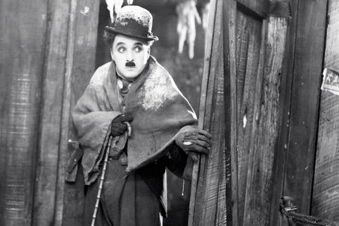 Some scenes simply no longer existed in the original full frame, so the restorers turned to sound elements, which were cropped to make room for the audio track. (This accounts for some of the framing inconsistencies on the Criterion and MK2 silents.)
Some scenes simply no longer existed in the original full frame, so the restorers turned to sound elements, which were cropped to make room for the audio track. (This accounts for some of the framing inconsistencies on the Criterion and MK2 silents.)
The most interesting extra feature comes from music man Timothy Brock, known for his reconstructions of Chaplin’s scores. He makes the case that Chaplin was a fine musical artist, even though he couldn’t read the notes on his own scores.
“His other talents … are so immense that people sort of forget that part,” Brock says. “He took himself very seriously as a musician.”
Brock quotes a Chaplin relative as saying, “It’s too bad that Charlie became an actor because the world lost a great composer.”
On “The Gold Rush,” Brock says, Chaplin wrote the music as if he were scoring a dance — every gesture by the Little Tramp accompanied by a sonic accent or response. “The music does everything,” he maintains. The narration wasn’t needed. (Read Brock’s extensive notes on the “Gold Rush” adaptation.)
Special effects man Craig Barron spends 20 minutes breaking down some of the historic illusions used in “The Gold Rush,” including the amazing bit in which the old cabin teeters on the edge of an icy mountain. “It still looks great today,” Barron says. “There’s no apologies to be made (due to the age).” Barron marvels that they could “pull something off like that in 1925.” (See a video clip of his talk at the bottom of this page.)
Cinematographer Roland Totheroh (heard on older audio) talks about rounding up hobos for the big opening scene with “that long trail of fellows buckin’ this pass.”
The Blu-ray also contains four entertaining trailers from European releases of the sound version. The booklet includes the 1942 review from Time, as well as a contemporary piece from Luc Sante (read it). This being Criterion, the booklet also details the restoration methods and credits.
Criterion also just released “The Gold Rush” on DVD..
Related home video reviews:
- “The Little Rascals”: The kids are all right, still
- “Buster Keaton Collection” stars “The Cameraman”
- Sherlock Holmes on Blu-ray
Check out Glenn Abel on Google+
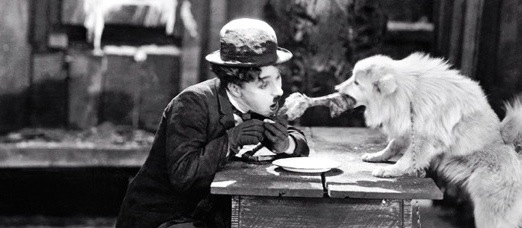
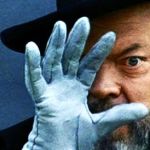
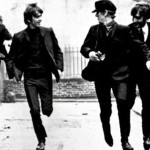
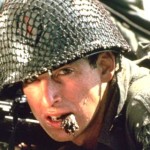
My late friend Chauncey Haines played the organ when Chaplin sneak previewed the film at the Forum Theater on Pico Blvd in West Adams (it’s now a Korean church, I think). Chaplin sat next to him on the piano seat and told Chauncey everything that was going to happen ahead of time — remember no one including the organist had seen the film yet. Chauncey said that Chaplin always referred to the Little Tramp in the third person, i.e., “He’s going to eat the shoe now.”